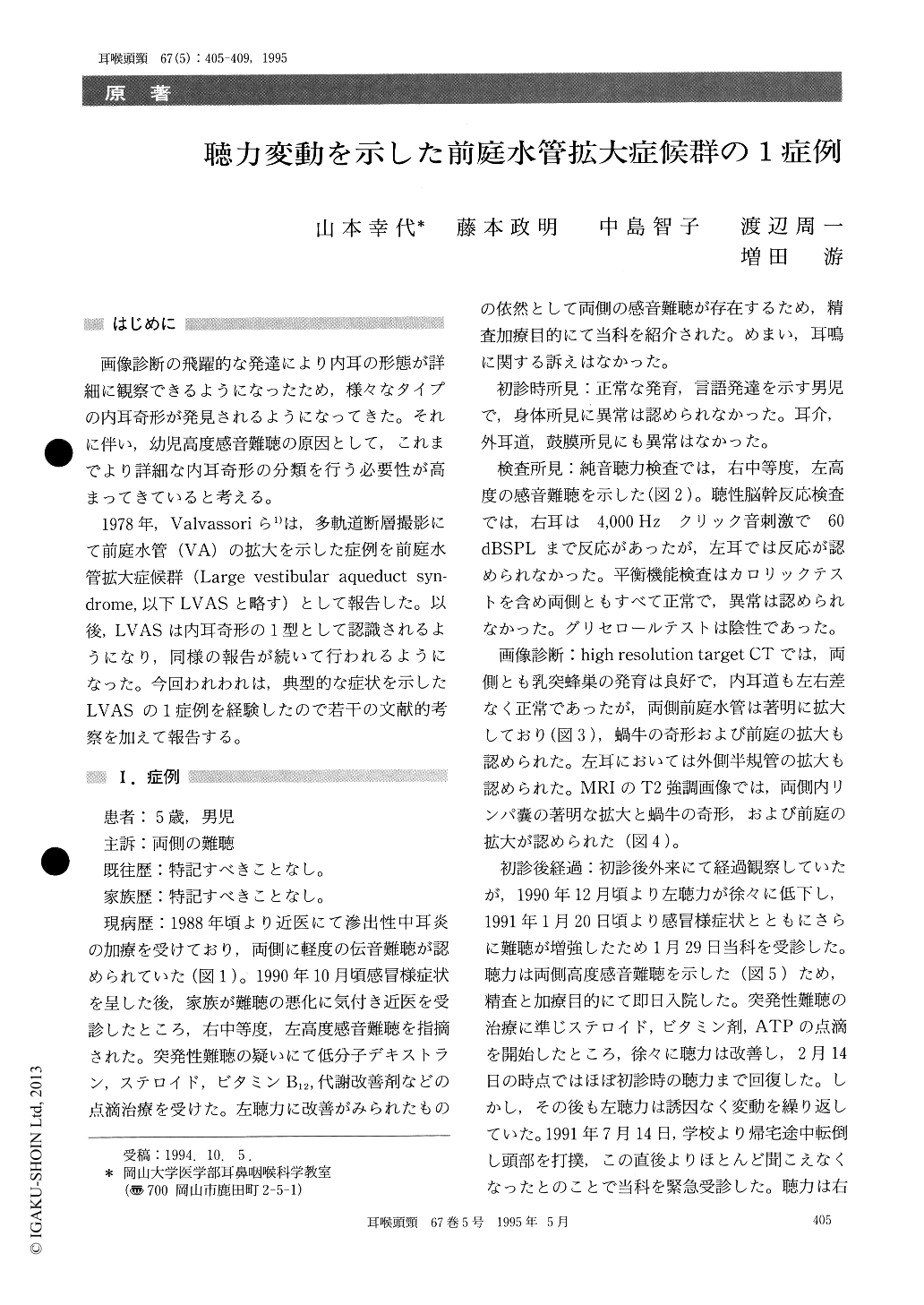Japanese
English
- 有料閲覧
- Abstract 文献概要
- 1ページ目 Look Inside
はじめに
画像診断の飛躍的な発達により内耳の形態が詳細に観察できるようになったため,様々なタイプの内耳奇形が発見されるようになってきた。それに伴い,幼児高度感音難聴の原因として,これまでより詳細な内耳奇形の分類を行う必要性が高まってきていると考える。
1978年,Valvassoriら1)は,多軌道断層撮影にて前庭水管(VA)の拡大を示した症例を前庭水管拡大症候群(Large vestibular aqueduct syn-drome,以下LVASと略す)として報告した。以後,LVASは内耳奇形の1型として認識されるようになり,同様の報告が続いて行われるようになった。今回われわれは,典型的な症状を示したLVASの1症例を経験したので若干の文献的考察を加えて報告する。
The large vestibular aqueduct syndrome (LVAS) was first reported by Valvassori and Clemis in 1978, and was recognized as a congenital inner ear mal-fomation. LVAS was associated with congenital sensorineural hearing loss (SNHL) or acquired SNHL in early childhood. Hearing loss was char-acterized as progressive, flactuating or sudden deaf-ness. Sudden deafness was closely connected with episode of minor head trauma.
A 5-year-old male was diagnosed as having LVAS bilaterally on high resolution target CT and MRI. His SNHL was acquired and deteriorated with an episode of minor head trauma.

Copyright © 1995, Igaku-Shoin Ltd. All rights reserved.


